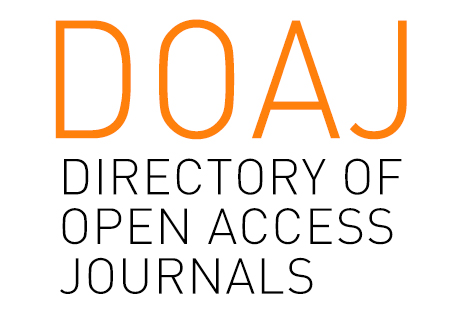Mobile phones usage in hospital settings and the risk of bacterial contamination
DOI:
https://doi.org/10.17765/2176-9206.2021v14n3e9456Keywords:
Bacteria, Biological contamination, Cell phone use, Cross infectionAbstract
This work aims to evaluate the characteristics of the cell phone by employees, students and health professionals and investigate the relationship with the number and type of microorganisms present on the phone. Sociodemographic data and information on cell phone use were collected, in addition to the microbiological assessment of the phones. The data were analyzed in SPSS, through descriptive statistics of the variables. Among the 50 study participants, 82% were female, 96% used their cell phones at work and 70% performed some type of asepsis. Regarding microbiological collection, there was bacterial growth in 68% of cell phones, whose most isolated bacterium was negative coagulase Staphylococcus (47%). In addition, there was a growth of more than 100.000 CFU/mL in the cell phones of residents (26.5%) and undergraduates (23.5%). It is concluded that the use of the cell phone during the working day is frequent, which may be related to the number of contaminated devices.Downloads
References
Graveto, JM, Costa, PJ, Santos, CI. Cell phone usage by health personnel: preventive strategies to decrease risk of cross infection in clinical context. Texto & Contexto Enferm. [internet] 2018 Mar [acesso em 2020 abr 14; 27(1):e5140016. Doi: 10.1590/0104-07072018005140016
Worku, T, Derseh, D, & Kumalo, A. Bacterial profile and antimicrobial susceptibility pattern of the isolates from stethoscope, thermometer, and inanimate surfaces of Mizan-Tepi University Teaching Hospital, Southwest Ethiopia. IntJ Microbiol. [internet] 2018 Jun [acesso em 2020 abr 14; 2018. Doi: 10.1155/2018/9824251
Dorost, A, Safari, Y, Akhlaghi, M, Soleimani, M, Yoosefpour, N. Microbial contamination data of keypad and touch screen of cell phones among hospital and non-hospital staffs-A case study: Iran. Data in Brief [internet] 2018 Out [acesso em 2020 mar 23]; 20:80-4. Doi: 10.1016/j.dib.2018.07.041
Brixner, B., Renner, JDP, Krummenauer EC. Contaminação ambiental da UTI pediátrica: fator de risco para ocorrência de infecções oportunistas? R. Epidemiol. Control. Infec. [internet] 2016 [acesso em 2020 mar 26]; 6(1):24-8. Doi: 10.17058/reci.v6i1.6819
Foong, YC, Green, M, Zargari, A, Siddique, R, Tan, V, Brain, T, et al. Mobile phones as a potential vehicle of infection in a hospital setting. J Occup Environ Hyg. [internet] 2015 [acesso em 2020 mai 2]; 12(10):232-5. Doi: 10.1080/15459624.2015.1060330
Olsen, M, Campos, M, Lohning, A, Jones, P, Legget, J, Bannach-Brown, A, et al. Mobile phones represent a pathway for microbial transmission: a scoping review. Travel Medicine and Infectious Disease [internet] 2020 Mai-Jun [acesso em 2020 mai 30];101704. Doi:10.1016/j.tmaid.2020.101704
Mark, D, Leonard, C, Breen, H, Graydon, R, O'Gorman, C, Kirk, S. Mobile phones in clinical practice: reducing the risk of bacterial contamination. International. Int J Clin Pract. [internet] 2014 Set [acesso em 2020 mai 25]; 68(9):1060-4. Doi: 10.1016/j.tmaid.2020.101704
Orsi, GB., Natale, F, d’Ettorre, G, Protano, C, Vullo, V, De Curtis, M. Mobile phone microbial contamination among neonatal unit healthcare workers. Infect Control Hosp Epidemiol [internet] 2015 Abr [acesso em 2020 mai 25]; 36(4):487-9. Doi: 10.1017/ice.2015.2
Schnall, R, Iribarren, SJ. Review and analysis of existing mobile phone applications for health care-associated infection prevention. Am Jof Infect Control [internet] 2015 Jun [acesso em 2020 mai 26]; 43(6):572-6. Doi:10.1016/j.ajic.2015.01.021
Cunha, CBC, Moraes, FR, Monteiro, VS, Feitosa, FGMA, Silva, ITC. Avaliação microbiológica dos aparelhos celulares de profissionais do Bloco Cirúrgico em um Hospital beneficente. R. Epidemiol. Control. Infec. [internet] 2016 [acesso em 2020 mar 26]; 6(3):120-4. Doi: 10.17058/reci.v6i3.6717
Pal, S, Juyal, D, Adekhandi, S, Sharma, M, Prakash, R, Sharma, N, et al. Mobile phones: Reservoirs for the transmission of nosocomial pathogens. Adv Bio med Res. [internet] 2015 Jul [acesso em 2020 mai 26];4. Doi: 10.4103/2277-9175.161553
Bodena, D, Teklemariam, Z, Balakrishnan, S, Tesfa, T. Bacterial contamination of mobile phones of health professionals in Eastern Ethiopia: antimicrobial susceptibility and associated factors. Trop Med Health [internet] 2019 Fev [acesso em 2020 jun 1]; 47(1):15. Doi: 10.1186/s41182-019-0144-y
Missri, L, Smiljkovski, D, Prigent, G, Lesenne, A, Obadia, T, Joumaa, M, et al. Bacterial colonization of healthcare workers’ mobile phones in the ICU and effectiveness of sanitization. J Occup Environ Hyg. [internet] 2019 Fev [acesso em 2020 jun 1]; 16(2):97-100. Doi: 10.1080/15459624.2018. 1546051
Kotris, I, Drenjančević, D, Talapko, J, Bukovski, S. Identification of microorganisms on mobile phones of intensive care unit health care workers and medical students in the tertiary hospital. Med Glas (Zenica) [internet] 2019 Fev [acesso em 2020 mai 28]; 14(1):85. Doi: 10.17392/878-16
Heyba, M, Ismaiel, M, Alotaibi, A, Mahmoud, M, Baqer, H, Safar, A, et al. (2015). Microbiological contamination of mobile phones of clinicians in intensive care units and neonatal care units in public hospitals in Kuwait. BMC Infectious Diseases [internet] 2015 [acesso em 2020 mai 30]; 15(1):434. Doi: 10.1186/s12879-015-1172-9
Brasil. Agência Nacional de Vigilância Sanitária. Microbiologia Clínica para o Controle de Infecção Relacionada à Assistência à Saúde. Módulo 6: Detecção e identificação de bactérias de importância médica / Agência Nacional de Vigilância Sanitária. Brasília: Anvisa; 2013. 150p.
Sondhi, V, Devgan, A. Translating technology into patient care: Smartphone applications in pediatric health care. Med J Armed Forces India [internet] 2013 Abr [acesso em mai 30]; 69(2):156-61. Doi: 10.1016/j.mjafi.2013.03.003
Santos, JAD. Estetoscópio: instrumento de diagnóstico e de propagação microbiana? Saúde e Pesq. [internet] 2015 set-dez [acesso em 2020 jun 1]; 8(3):577-84. Doi: 10.17765/2176-9206.2015v8n3p577-584
Badr, RI, Badr, HI, Ali, NM. Mobile phones and nosocomial infections. Intl J Infec Control [internet] 2012 [acesso em 2020 jun 2]; 8(2):1-5. Doi: 10.3396/IJIC.V8I2.9933
Becker K, Heilmann C, Peters G. Coagulase-negative staphylococci. Clin Microb Reviews [internet] 2014 [acesso em 2020 jun 02]; 27(4):870-926. Doi: 10.1128/CMR.00109-13
Heilmann, C, Ziebuhr, W, Becker, K. Are coagulase-negative staphylococci virulent? Clin Microbi Infection [internet] 2019 Set [acesso em 2020 jun 2]; 25(9):1071-80. Doi: 10.1016/j.cmi.2018.11.012
Hitzenbichler, F, Simon, M, Salzberger, B, Hanses, F. Clinical significance of coagulase-negative staphylococci other than S. epidermidis blood stream isolates at a tertiary care hospital. Infection [internet] 2017 Abr [acesso em 2020 jun 2]; 45(2):179-86. Doi: 10.1007/s15010-016-0945-4
Silva, FS, Brixner, B, Oliveira, CF, Renner, JDP. What are the risk factors and agents responsible for bacterial infections in ICUs? Mundo Saúde [internet] 2018 Mar [acesso em 2020 jun 3]; 42(1):61-76. Doi: 10.15343/0104-7809.201842016176
Panigrahi, SK, Pathak, VK, Kumar, MM, Raj, U. Covid-19 and mobile phone hygiene in healthcare settings. BMJ Global Health [internet] 2020 Abr [acesso em 2020 jun 3]; 5(4): e002505. Doi: 10.1136/bmjgh-2020-002505
Additional Files
Published
How to Cite
Issue
Section
License
A submissão de originais para a revista Saúde e Pesquisa implica na transferência da Carta Concessão de Direitos Autorais, pelos autores, dos direitos de publicação digital para a revista após serem informados do aceite de publicação.A Secretaria Editorial irá fornecer da um modelo de Carta de Concessão de Direitos Autorais, indicando o cumprimento integral de princípios éticos e legislação específica. Os direitos autorais dos artigos publicados nesta revista são de direito do autor, com direitos da revista sobre a primeira publicação. Os autores somente poderão utilizar os mesmos resultados em outras publicações, indicando claramente a revista Saúde e Pesquisa como o meio da publicação original. Em virtude de tratar-se de um periódico de acesso aberto, é permitido o uso gratuito dos artigos, principalmente em aplicações educacionais e científicas, desde que citada a fonte. A Saúde e Pesquisa adota a licença Creative Commons Attribution 4.0 International.
A revista se reserva o direito de efetuar, nos originais, alterações de ordem normativa, ortográfica e gramatical, com vistas a manter o padrão culto da língua e a credibilidade do veículo. Respeitará, no entanto, o estilo de escrever dos autores. Alterações, correções ou sugestões de ordem conceitual serão encaminhadas aos autores, quando necessário. Nesses casos, os artigos, depois de adequados, deverão ser submetidos a nova apreciação. As opiniões emitidas pelos autores dos artigos são de sua exclusiva responsabilidade.

















